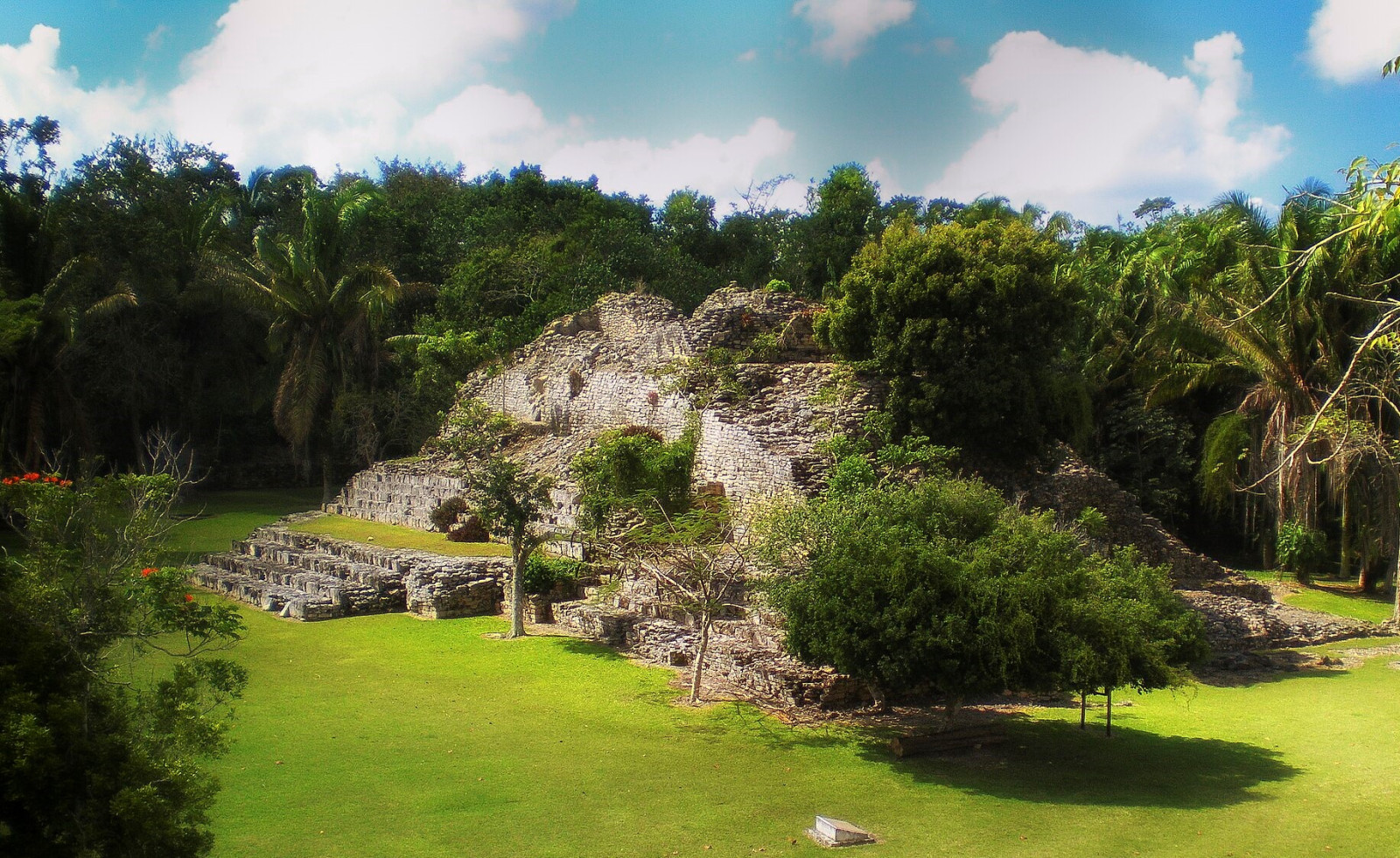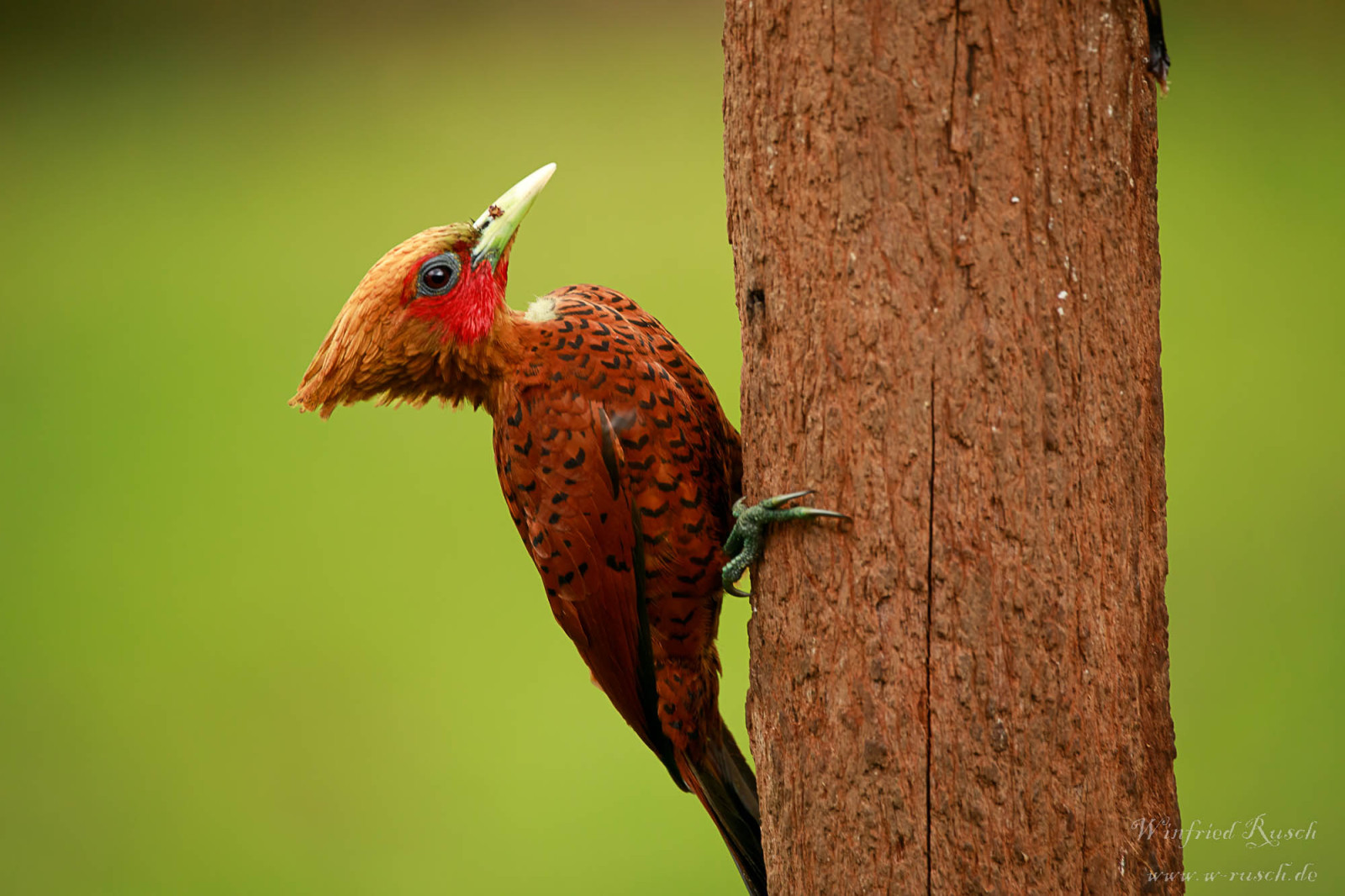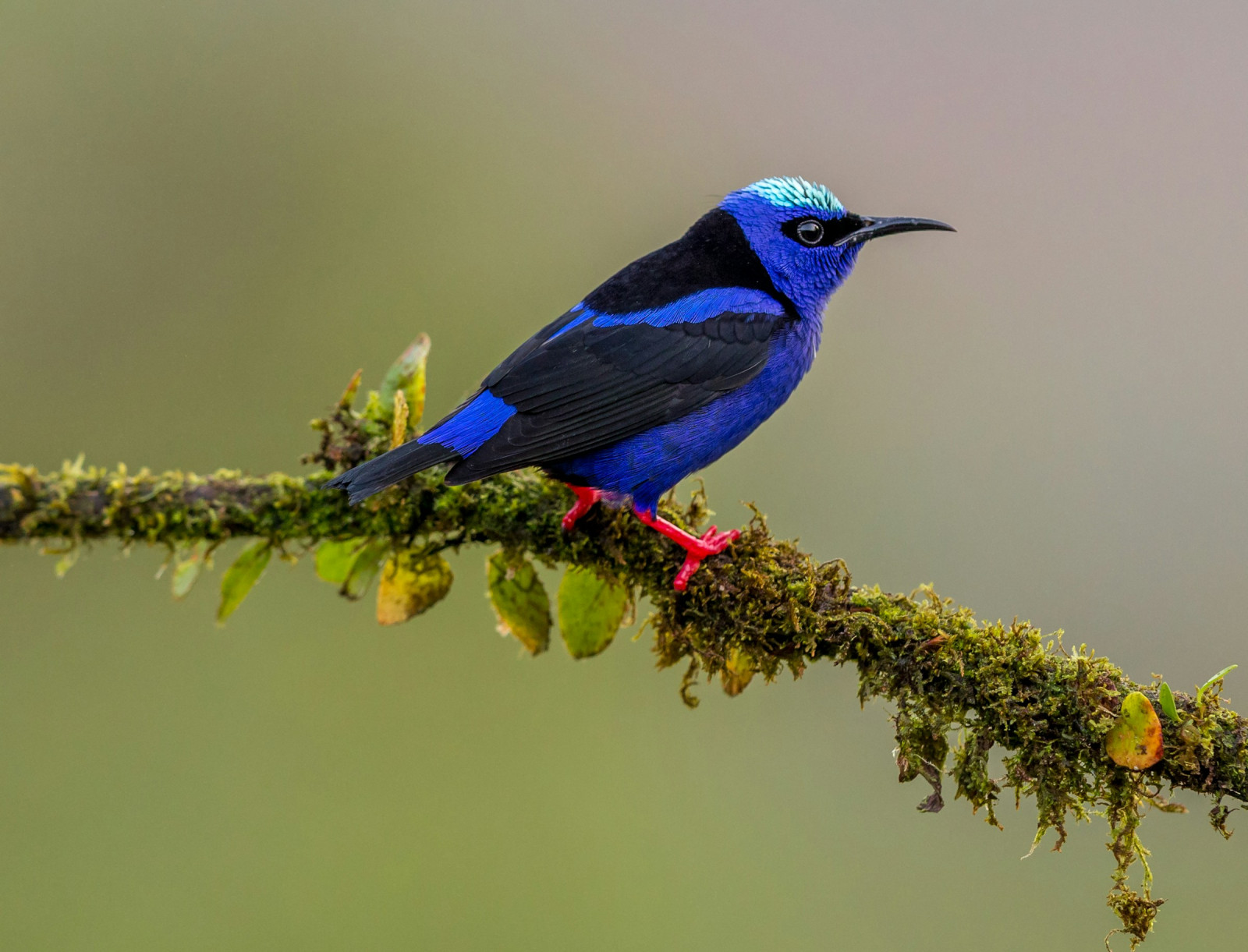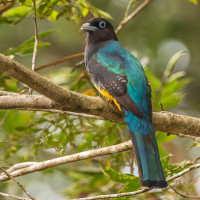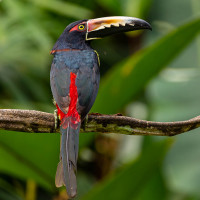Descrição
Kohunlich is an archaeological site of the Maya civilization. Many of the buildings and pyramids are still covered with thick vegetation and overgrown by trees. The ruins are surrounded by dense sub-tropical rainforest. There are no real tracks into the forest, so you mostly see forest edge species. However, many birds can be observed. For example Squirrel Cuckoo, Scaled Pigeon, Roadside Hawk, Lesson's Motmot, Yellow-throated Euphonia, Tawny-winged Woodcreeper, White-collared Manakin, Eye-ringed Flatbill, Bright-rumped Attila, White-breasted Wood-Wren, Pale-billed Woodpecker, Chestnut-colored Woodpecker, Royal Flycatcher, Great Kiskadee and Red-legged Honeycreeper.
Detalhes
Acesso
Kohunlich is about 65 km west of Chetumal on Highway 186, and 9 km south of the road. This road that you have to take from the 186 is also good for birding (in the early morning) with fields and marshes and small forest patches. The archeological site itself (open at 8 am) is well wooded, but small. A visit is easily done within an hour. So best to divide your time birding between the 9 km road to Kohunlich and the archeological site. Click on the P in the map to get directions (or coordinates) to the archeological site.
Terreno e Habitat
Floresta , CampinaCondições
Rochoso , Paisagem abertaCaminho circular
Simé útil um telescópio?
NãoBoa temporada de observação de aves
Durante todo o anoMelhor hora para visitar
Primavera , InvernoRota
Caminho largoCaminho dificil
FácilAcessível por
PéAbrigo/plataforma deobservação de aves
NãoInformação extra
Foto Kohunlich by Memoplaza, CC BY-SA 3.0, https://creativecommons.org/licenses/by-sa/3.0, via Wikimedia Commons
